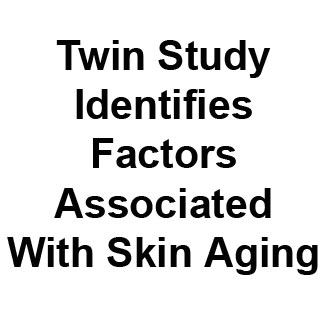
Apparently long-term exposure to the sun may lead to physical and structural changes to the skin. According to background information in the article, this could result in photodamage. The condition seems to be much unlike typical skin aging that is characterized by the development of fine wrinkles and skin growths. Photodamage includes traits like coarsely wrinkled skin, spots of extra pigment or lost pigment and dilated blood vessels on the face.
In addition to this, sun damage has also been related with the development of cancerous growths. Supposedly non-genetic factors may be responsible for up to 40 percent of aging-related changes.
Some of these environmental factors were identified by Kathryn J. Martires, B.A., of Case Western Reserve School of Medicine, Cleveland, and colleagues. They analysed 65 pairs of twins present at the 2002 annual Twin Days Festival in Twinsburg, Ohio. With a total of 130 individuals completing the surveys, the experts garnered information regarding skin type, history of skin cancer, smoking and drinking habits along with weight.
“The Twins Days Festival provides a rare opportunity to study a large number of twin pairs to control for genetic susceptibility. Among the most important results is that a history of skin cancer and photodamage are highly associated in a population that shares genetic commonalities,” the authors conclude. “The relationships found between smoking, weight, sunscreen use, skin cancer and photodamage in these twin pairs may help to motivate the reduction of risky behaviors.”
A photodamage score was assigned by the clinicians to each participant. It was graded by characteristics like wrinkling and change in pigmentation. Among both monozygotic (identical) and dizygotic (fraternal) twins, it was observed that photodamage scores were highly correlated. Higher levels of photodamage seem to have been linked to other factors a history of skin cancer, heavier weight and smoking. Lower photodamage scores appear to have been related to alcohol consumption.
The report features in the December issue of Archives of Dermatology, one of the JAMA/Archives journals.
